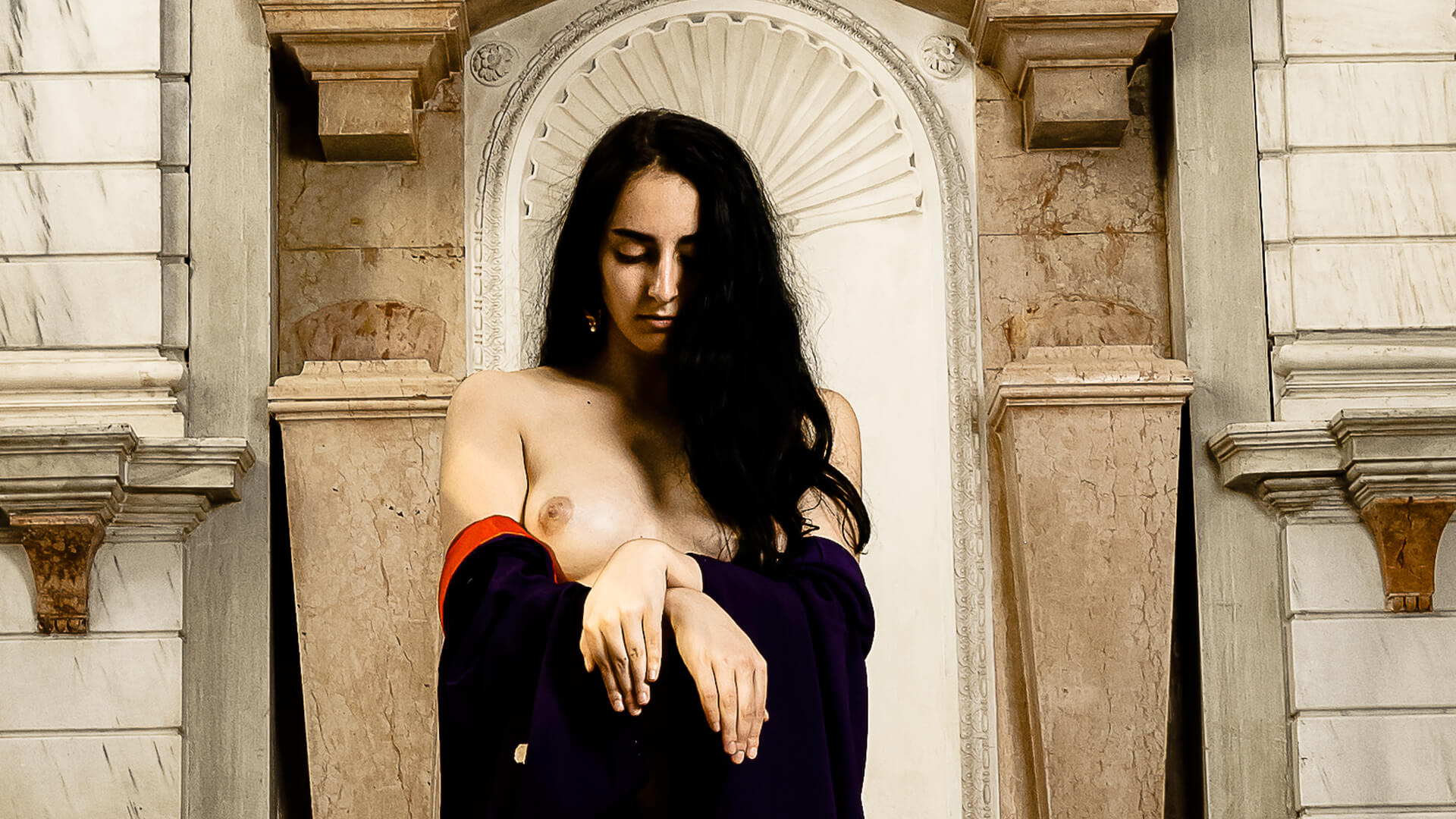
infidel children
Photography only represents a lie (false), so life does about the definition of reality. We could argue that a stable reality does not exist, photography – in its own stagnant aspect – is an oxymoron of a view and what seems real can be temporarily true/unreal or false at the same moment as far as some experiences in our life.
Today I wonder what could be the opportunities offer by the device of photography at the time when the game is exposed and ”the virgin has been violated”. In the last few years I focused on themes at edges of conflict. A hard game between real elements and unreal one making several contexts that originate from the truth and slowly develop into the imagination (voluntarily/accidentally). With ”Infidel children”, I worked on the relationship between East and West during the length of time 1905 and 1920 when the ideas and views were ”virgin” not too abused by the fury of images as J.Fontcuberta reminds us. I worked with a true girl whom play herself and her ”oriental intimacy” (she has always been fond of oriental cultures such as Korean and Japanese).
The game with the ”view” was made with images of authentic sacred icons of the same period 1910-1920 appropriately altered and de-sacralized to make them Japanese ones. Even her the ”game” is real. The girl is real and she has been studying the culture for many years, but still she is not Japanese; we could say she is a ”fake oriental geisha” or a ”fake western girl” who wears an authentic kimono made by silk from 1920s and belonged to none. The religious icons or ”santini” are original on Miriam’s body, but turned into Japanese icons at the moment when they come out from the set. As can be seen from some colored symbols located on the surface, I submitted the images to an algorithm to record my gaze on them. The unfaithful children are these ”adolescent images”: true and terribly faithless (infidel).
